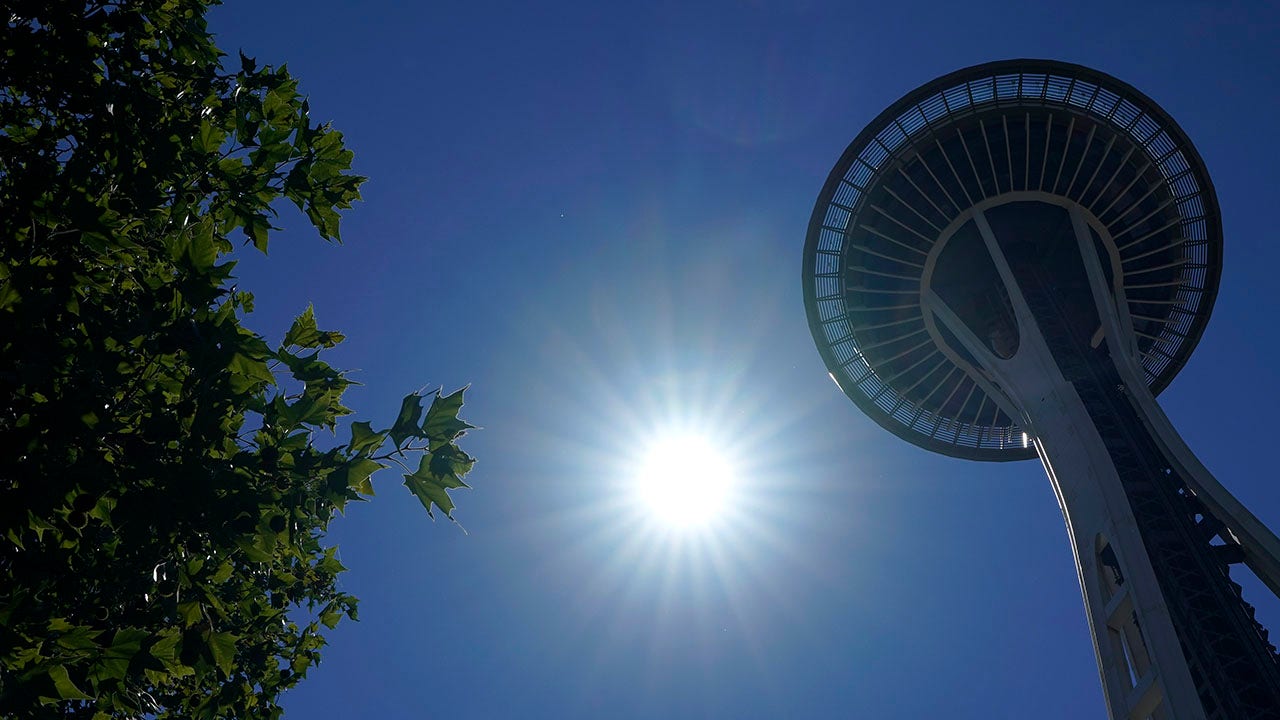The U.S. has been threatened by unprecedented heat during summer 2021, with records quickly toppling in June.
Excessive and oppressive temperatures dominated the Pacific Northwest and cities in Oregon and Washington broke triple digits.
EXTREME HEAT LINGERS IN NORTHWEST FOLLOWING RECORD-HIGH TEMPERATURES
The life-threatening conditions forced state and local officials to take action, issuing emergency orders and lifting COVID-19 restrictions to open cooling centers.
The wave caused pavement to crack, closing roads in Western Washington, Spokane was hit with rolling blackouts and hundreds were sent to hospitals in both states.
Salem Fire Department paramedics respond to a heat exposure call at a cooling center during a heat wave, Saturday, June 26, 2021, in Salem, Ore. (AP Photo/Nathan Howard)
“The heat that we’ve experienced over the last couple days…is highly unusual and has been historic. We’re talking all-time temperature records that are being broken, in some cases by 5, 10 degrees,” Justin Pullin, a National Weather Service (NWS) meteorologist said Monday.
The NWS said that the cause of the dangerous weather was a dome of high pressure positioned over a large swath of the western U.S. for most of June.
The “heat dome” had shifted north, giving little relief to California, Arizona, Nevada and other states already threatened with sweltering weather and historic drought exacerbated by climate change.
MORE THAN 90% OF WEST THREATENED BY HISTORIC DROUGHT THAT MAY STRETCH THROUGH SUMMER
But, what is a heat dome?
Well, according to the National Oceanic and Atmospheric Administration (NOAA), a heat dome occurs after “strong, high-pressure atmospheric conditions” join with influences from the La Niña, climate pattern leading to the creation of vast areas of scorching heat “that gets trapped under the high-pressure ‘dome.’”
The agency said on its website that a team of NOAA MAPP Program scientists had found the main cause of heat domes to be a “strong change (or gradient) in ocean temperatures from west to east in the tropical Pacific Ocean during the preceding winter.”
NOAA compared the change to a heated pool, with temperatures rapidly rising in areas around heater jets and more slowly in the rest of the pool.
Sabina Ehmann and her daughter Vivian, visiting Seattle from North Carolina, are prepared with umbrellas to shield the sun during a heat wave hitting the Pacific Northwest, Sunday, June 27, 2021, in Seattle. (AP Photo/John Froschauer)
“If one thinks of the Pacific as a very large pool, the western Pacific’s temperatures have risen over the past few decades as compared to the eastern Pacific, creating a strong temperature gradient, or pressure differences that drive wind, across the entire ocean in winter. In a process known as convection, the gradient causes more warm air, heated by the ocean surface, to rise over the western Pacific, and decreases convection over the central and eastern Pacific,” it said.
CLICK HERE FOR THE FOX NEWS APP
Then, as winds move the hot air eastward, the northern shifts of the jet stream – a band of strong wind that generally blows from west to east – ensnare it and move it toward land, where it sinks, creating heat waves.
While the Pacific Northwest is forecast to see some relief over the next few days, unprecedented heat will continue through the rest of the week for the Northern Great Basin and Northern Rockies.
The Associated Press contributed to this report.








